SsangYong Korando VS McLaren Supercar Series Coupe – Specs, Efficiency & Price Comparison
Find out now which car fits your needs better!
The SsangYong Korando (SUV) is powered by a Petrol or Electric engine and comes with a Manuel or Automatic transmission. In comparison, the McLaren Supercar Series Coupe (Coupe) features a Plugin Hybrid engine and a Automatic gearbox.
When it comes to boot capacity, the SsangYong Korando offers 551 L, while the McLaren Supercar Series Coupe provides – depending on what matters most to you. If you’re looking for more power, you’ll need to decide whether the 190 HP of the SsangYong Korando or the 700 HP of the McLaren Supercar Series Coupe suits your needs better.
There are also differences in efficiency: 16.80 kWh7.50 L vs 4.60 L. In terms of price, the SsangYong Korando starts at 27000 £, while the McLaren Supercar Series Coupe is available from 213000 £.
Compare all the key specs now and find out which model fits your lifestyle best!
SsangYong Korando
The SsangYong Korando offers a blend of contemporary design and practicality, making it an appealing choice for urban adventurers. Its spacious interior and comfortable seating ensure a pleasant driving experience for both driver and passengers. With its reliable performance and advanced features, the Korando stands out in the competitive SUV market.
details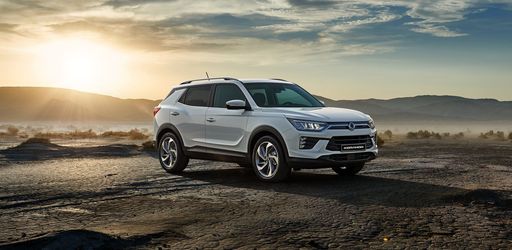 @ Ssangyong
@ Ssangyong
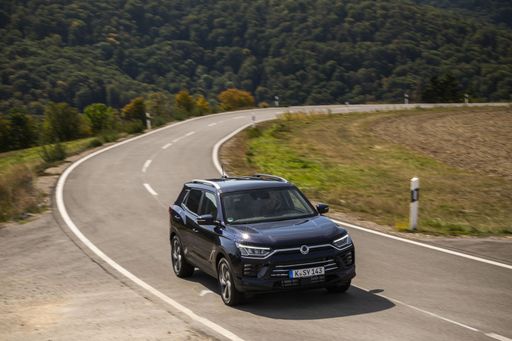 @ Ssangyong
@ Ssangyong
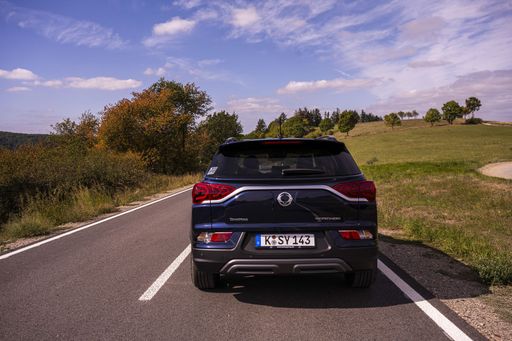 @ Ssangyong
@ Ssangyong
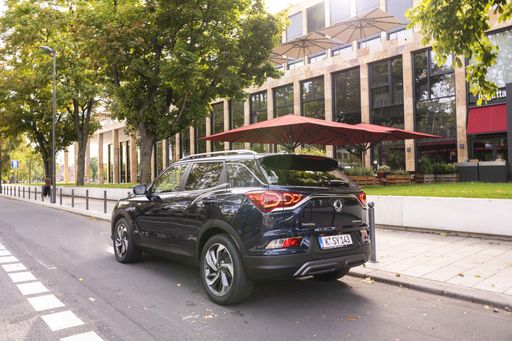 @ Ssangyong
@ Ssangyong
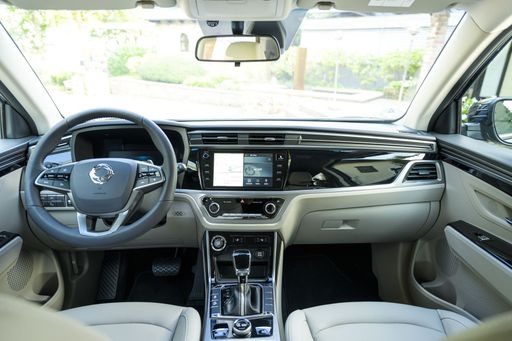 @ Ssangyong
@ Ssangyong
McLaren Supercar Series Coupe
The McLaren Supercar Series Coupe exemplifies the pinnacle of British engineering, blending exquisite design with unparalleled performance. Its aerodynamic contours and striking silhouette not only capture attention but also enhance its dynamic capabilities on the road. Inside, the cabin combines luxury with advanced technology, offering a driving experience that is both exhilarating and refined.
details

|
|
|
|
|
Costs and Consumption |
|
|---|---|
|
Price
27000 - 42000 £
|
Price
213000 £
|
|
Consumption L/100km
7.5 - 8.6 L
|
Consumption L/100km
4.60 L
|
|
Consumption kWh/100km
16.80 kWh
|
Consumption kWh/100km
-
|
|
Electric Range
339 km
|
Electric Range
33 km
|
|
Battery Capacity
-
|
Battery Capacity
7.40 kWh
|
|
co2
0 - 197 g/km
|
co2
104 g/km
|
|
Fuel tank capacity
50 L
|
Fuel tank capacity
66 L
|
Dimensions and Body |
|
|---|---|
|
Body Type
SUV
|
Body Type
Coupe
|
|
Seats
5
|
Seats
2
|
|
Doors
5
|
Doors
2
|
|
Curb weight
1517 - 1840 kg
|
Curb weight
1498 kg
|
|
Trunk capacity
551 L
|
Trunk capacity
-
|
|
Length
4450 - 4465 mm
|
Length
4539 mm
|
|
Width
1870 mm
|
Width
1913 mm
|
|
Height
1620 - 1645 mm
|
Height
1193 mm
|
|
Payload
410 - 463 kg
|
Payload
-
|
Engine and Performance |
|
|---|---|
|
Engine Type
Petrol, Electric
|
Engine Type
Plugin Hybrid
|
|
Transmission
Manuel, Automatic
|
Transmission
Automatic
|
|
Transmission Detail
Manual Gearbox, Automatic Gearbox, Reduction Gearbox
|
Transmission Detail
Automat. Schaltgetriebe (Doppelkupplung)
|
|
Drive Type
Front-Wheel Drive, All-Wheel Drive
|
Drive Type
Rear-Wheel Drive
|
|
Power HP
163 - 190 HP
|
Power HP
700 HP
|
|
Acceleration 0-100km/h
8.40 s
|
Acceleration 0-100km/h
3 s
|
|
Max Speed
156 - 191 km/h
|
Max Speed
330 km/h
|
|
Torque
260 - 360 Nm
|
Torque
720 Nm
|
|
Number of Cylinders
4
|
Number of Cylinders
6
|
|
Power kW
120 - 140 kW
|
Power kW
515 kW
|
|
Engine capacity
1497 cm3
|
Engine capacity
2993 cm3
|
General |
|
|---|---|
|
Model Year
2021 - 2023
|
Model Year
2024
|
|
CO2 Efficiency Class
F, G, A
|
CO2 Efficiency Class
C
|
|
Brand
SsangYong
|
Brand
McLaren
|
SsangYong Korando
Discovering the SsangYong Korando: Combining Performance with Innovation
The SsangYong Korando has persistently evolved, emerging as a formidable presence in the compact SUV segment. With a blend of intriguing design, versatile engine options, and cutting-edge technology, the Korando aims to cater to a diverse array of driving preferences and needs. In this article, we delve into the technical intricacies and pioneering innovations that define the vehicle.
A Versatile Engine Line-up: Catering to Petrol and Electric Enthusiasts
The Korando provides a remarkable variety of powertrains, accommodating drivers who favour both traditional petrol engines and modern electric motors. For petrol enthusiasts, the Korando comes equipped with a 1.5 GDI-T engine, boasting a power output of 163 PS. Available in both manual and automatic transmission, and offering either front-wheel or all-wheel drive, these variants promise a dynamically engaging driving experience.
The brand’s commitment to sustainability is evident with the introduction of the E-Motion model, which is powered by an electric motor delivering 190 PS. With a commendable range of 339 km and an energy consumption of 16.8 kWh/100km, the E-Motion exemplifies SsangYong's ambition to shape the future of eco-friendly motoring.
Technical Excellence: Performance and Efficiency
With a peak speed ranging between 156 to 191 km/h, the Korando ensures that drivers experience both agility and responsiveness. The petrol variants offer a respectable efficiency, with fuel consumption spanning from 7.5 to 8.6 L/100km, while the electric variant promotes zero emissions. This makes the Korando an optimal choice for those conscious of both performance and environmental impact.
Acceleration from 0 to 100 km/h in just 8.4 seconds—paired with a torque range of 260 to 360 Nm—ensures an exhilarating ride whether navigating city streets or venturing onto open highways. Moreover, with a robust towing capacity, the Korando stands as a reliable companion for any adventure.
Interior Quality and Innovative Features
Inside the Korando, occupants are greeted by a spacious cabin designed with emphasis on comfort and practicality. Advanced infotainment systems seamlessly integrate with connectivity features, ensuring that every journey is both entertaining and stress-free. Emphasising safety, the Korando is equipped with multiple driver-assistance systems, including adaptive cruise control and lane-keeping assist.
Mirroring its exterior aesthetics, the interior is crafted with premium materials, providing a serene ambience throughout the ride. With abundant luggage space, a family of five can effortlessly embark on long-distance travels without compromises on space or comfort.
Conclusion: A Synergy of Tradition and Modernity
The SsangYong Korando seamlessly merges robust performance with cutting-edge innovation, appealing to a wide demographic of drivers. Whether drawn to the unmistakable power of its petrol engines or the sustainable allure of its electric variant, prospective owners are sure to find a model that complements their lifestyle. The Korando remains an impactful player in the SUV landscape, continually adapting to the demands of modern-day motoring while staying true to its heritage.
McLaren Supercar Series Coupe
Unleashing Innovation: The Introduction of the McLaren Supercar Series Coupe
The McLaren Supercar Series Coupe Artura represents a paradigm shift in the realm of high-performance vehicles. With its cutting-edge design and pioneering technology, McLaren has once again redefined the driving experience. As we delve into the specifications and innovative features of this powerhouse, it becomes clear why this car has garnered so much attention in the automotive world.
Engineering Excellence: The Heart of the McLaren Artura
At the core of the McLaren Supercar Series Coupe Artura is its advanced 6-cylinder, plug-in hybrid engine. This combination of a 2993 cm3 V6 engine and electric motor forms the backbone of its impressive performance, delivering a total output of 700 PS (515 kW). The coupling of these power sources is managed by an automatic dual-clutch transmission, ensuring seamless gear shifts and maximising power delivery to the rear wheels.
Performance Redefined: Speed and Efficiency in Perfect Harmony
Performance enthusiasts will be thrilled by the car's astonishing acceleration, achieving 0-100 km/h in just 3 seconds, and reaching a top speed of 330 km/h. Despite its raw power, the Artura stands out for its efficiency, boasting a fuel consumption of just 4.6 L/100km and CO2 emissions of 104 g/km. The plug-in hybrid system offers an electric-only range of 33 km, providing drivers with an eco-friendly option for shorter journeys.
A Cabin Designed for the Driver
The interior of the Artura has been meticulously designed with the driver in mind. The cabin comfortably houses two occupants, encapsulating them in ergonomically positioned controls and cutting-edge technology that facilitates intuitive interaction with the vehicle. Minimalistic yet functional, the interior reflects McLaren's ethos of prioritising the driving experience.
Beyond the Numbers: The McLaren Artura's Technological Innovations
McLaren has incorporated an array of innovative technologies in the Artura, including the newly developed E-motor and battery system. The compact 7.4 kWh battery not only supports electric driving but also enhances the vehicle’s overall performance balance, owing to its strategic positioning within the car's architecture. Advanced aerodynamics and a lightweight carbon fibre chassis further distinguish the Artura, providing excellence in handling and road grip.
A Smart Investment: The Price of Perfection
For enthusiasts and collectors investing in automotive excellence, the McLaren Supercar Series Coupe Artura is priced at €248,500. Considering its balance of performance, efficiency, and state-of-the-art technology, the Artura represents an attractive offering in the competitive world of supercars.
Conclusion: The McLaren Artura – A Vision for the Future
The McLaren Supercar Series Coupe Artura stands as a testament to the boundless possibilities of modern automotive engineering. By expertly marrying performance with innovation and efficiency, McLaren has not only raised the bar for hybrid supercars but has also provided a glimpse into the future of motoring. This vehicle is more than a car; it is an experience, a statement, and a symbol of engineering prowess.
The prices and data displayed are estimates based on German list prices and may vary by country. This information is not legally binding.
